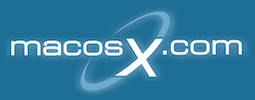Being a fairly new Mac convert. I am going to offer some little preventative maintenance that will keep any OS X machine running in tip top shape. This will prevent future situations.
1. First thing to remember OS X is based on a Unix code called BSD. Now, since BSD is the subsystem, and Unix has been around for a long time, OS X needs to be maintained. So, the first example, Tentano suggested a very good step in trying to help a sick OS X machine. This
Apple article explains Permissions and Disk Utility pretty good. I personally use Disk Utility and Repair Permissions before every/all big software install and right after the install. This helps keep my Mac on the straight and narrow (software wise).
Now there are two different ways to use the Disk Utility to Repair Permission. One is open your Hard drive icon->Utilities->Disk Utility and highlight your startup drive and then select Repair Permissions. The other way is boot from you install disk and then use Disk Utility to do the same thing. Apple has very good
article about how to do that.
2. Secondly, there are some routine maintenance scripts that run in most Unix variants, OS X is no exception. These maintenance scripts are called CRON jobs. Now, these scripts run on a running computer late at night (via your local time) and most people either sleep or turn off their computers at night (Unix was designed to run 24 hours straight). So, OS X users must force these jobs to run. Apple has provided a very good
article about this. I personally like small one trick pony pony programs + freeware to run small tasks so I use
MacJanitor. There are other programs that will do the same exact thing. So just go to
VersionTracker and do a search for cron and you will see them.
3. OS X is not perfect and it is safe to say all computer operating systems are not perfect and some suck worse then others.

So third party developers developed disk (CD) programs that fix OS X machines (unless a piece of hardware is toast). The two top programs I use (and most Mac users use) are
Alsofts's DiskWarrior and/or
Micromat's TechTool Pro 4. Both programs are very good in fixing OS x system and find bad hardware in your computer. One warning though, stay
far away from from a
discontinued product. It will hose up an OS X machine.
4. As a fairly new OS X user, maybe you should invest in a good OS X book. I personally bought David Pogue's
OSX: The missing Manual. He is very good it breaking down OS X so anyone can take full control over an OS X machine. It was well worth the book price.
 )
)
